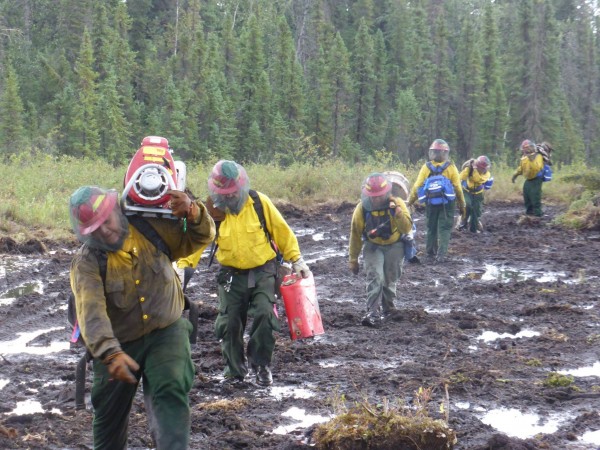Recent rain slowed wildfire growth around the interior, but there are still nearly 2 hundred active blazes, and over twenty staffed fires. The largest response is to a half-million-acre complex of fires near Tanana. Managers expect suppression and demobilization to take weeks.

Like many of the big wildfires in the interior, the five blazes around Tanana were started by abundant lightning that hit the region a month ago. One of the 2 largest: the Spicer Creek Fire has sandwiched the village up against the Yukon River. Bill Paxton, an information officer with the Lower 48-based team managing the response says over 350 people are working both quiet and active areas of the fire.
“While we’re doing rehab and pulling hose on one part of the fire we’re over, actively building line on another (part of the fire) where the threat is,” Paxton says.

Paxton says there’s potential for the Spicer Fire to spring back to life as the weather warms and dries this week, and the priority continues to be protecting the community.
“We’ve got, probably, 20-some miles of hose laid out protecting structures here, plus on the lines that we’re building.”
Paxton identifies the current area of concern as northwest of Tanana, where crews are directly attacking the fire.
“Building a defensible line all the way to this stream called Bear Creek, and from Bear Creek all the way to the Yukon, it’s tough going. It’s hand work. It’s saw work.”
Paxton says structure protection like hoses and sprinklers remain in place along 150 miles of the Yukon River, where the Spicer and 4 other large fires have threatened to advance for a month. He says the management team has committed to running the fire response through the end of July, after which the plan is to transition to a smaller organization.
Dan Bross is a reporter at KUAC in Fairbanks.




